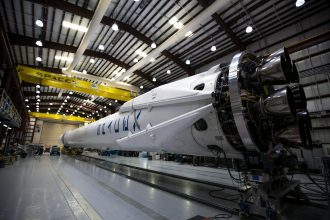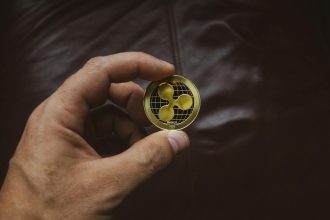# Siamese Neural Networks: Revolutionizing Earthquake Detection
The ground beneath our feet is a constant source of wonder and potential danger. For centuries, humanity has strived to understand and predict seismic events, a quest that has now taken a significant leap forward with the advent of a novel Siamese neural network (SNN) designed to measure the similarity of paired data. This groundbreaking technology promises to revolutionize how we detect first-motion polarities, a critical early indicator of earthquakes.
## Unlocking the Secrets of Seismic Signals
Earthquakes are a complex phenomenon, and their detection relies on interpreting subtle signals from the Earth’s crust. One of the most important pieces of information we can glean from seismic waves is the “first-motion polarity.” This refers to the direction of the initial ground motion – whether it’s an “up” or a “down” movement – as recorded by seismometers. Accurately identifying these polarities is crucial for understanding the rupture process of an earthquake, its depth, and ultimately, its potential impact.
### The Challenge of Traditional Methods
Traditional methods for determining first-motion polarities often involve manual analysis by experienced geophysicists. While effective, this process can be time-consuming and subjective, especially when dealing with noisy or weak seismic signals. The sheer volume of seismic data generated by global monitoring networks necessitates more efficient and objective approaches. This is where the power of artificial intelligence, and specifically this new Siamese neural network, comes into play.
## Introducing the Siamese Neural Network for Seismic Analysis
At its core, a Siamese neural network is designed to compare two inputs and determine how similar or dissimilar they are. In the context of earthquake detection, this means the SNN can be trained to compare seismic waveforms. Imagine feeding the network two different seismic recordings; it learns to identify if they represent similar types of initial ground motion, even if the signals themselves are not identical.
### How Does it Work?
The novel SNN architecture proposed in this research is specifically engineered to tackle the intricacies of seismic data. It learns a “metric” or a way to measure the distance between two seismic waveform segments. By analyzing a vast dataset of known seismic events with pre-determined first-motion polarities, the network learns to distinguish between “up” and “down” movements by recognizing the characteristic patterns in the waveforms associated with each.
When a new seismic event occurs, the SNN can process the incoming data and compare it against its learned patterns. This allows for a much faster and more consistent determination of first-motion polarities compared to manual methods. The key innovation lies in its ability to handle variations in signal strength, noise, and the distance of the recording station from the earthquake’s epicenter.
## The Power of Paired Data Measurement
The “measurement of similarity of paired data” is the cornerstone of this SNN’s effectiveness. Instead of trying to classify a single waveform in isolation, the network is trained to understand the relationship between two waveforms. This is particularly powerful for seismic analysis because:
* **Robustness to Noise:** By comparing a new, potentially noisy signal to a clean, well-understood reference signal, the SNN can filter out irrelevant noise and focus on the essential characteristics of the first motion.
* **Handling Variability:** Earthquakes and their resulting seismic waves are not uniform. The SNN’s ability to measure similarity allows it to adapt to variations in signal amplitude, frequency content, and the geological path the waves have traveled.
* **Early Detection Capabilities:** The speed at which an SNN can process and compare data means it can potentially identify first-motion polarities much earlier in the seismic event, providing crucial lead time for warnings and response.
## Implications for Earthquake Science and Safety
The development of this SNN has far-reaching implications for the field of seismology and, by extension, for public safety.
### Faster and More Accurate Earthquake Characterization
* **Improved Event Location:** Accurate first-motion polarities are essential inputs for locating earthquakes. Faster and more accurate polarity determination leads to quicker and more precise earthquake locations.
* **Understanding Fault Rupture:** By analyzing the distribution of first-motion polarities around an earthquake’s source, scientists can gain deeper insights into the complex mechanics of fault rupture – how the fault breaks and propagates.
* **Discriminating Between Earthquake Types:** Different types of seismic events, such as volcanic tremors or human-induced seismicity, can have distinct first-motion characteristics. The SNN could help in differentiating these events from tectonic earthquakes.
### Enhancing Early Warning Systems
Earthquake early warning (EEW) systems aim to provide seconds to minutes of warning before strong shaking arrives. The ability of this SNN to rapidly and reliably detect first-motion polarities is a significant advancement for EEW. Early detection of seismic waves allows for the rapid dissemination of alerts to populations in the path of the earthquake.
### Democratizing Seismic Analysis
As AI models become more sophisticated and accessible, they can empower smaller research institutions or even citizen science projects to contribute to seismic monitoring and analysis. This novel SNN could potentially lower the barrier to entry for advanced seismic data interpretation.
## The Future of Seismic Monitoring
The integration of advanced machine learning techniques like Siamese neural networks into seismology represents a paradigm shift. We are moving towards an era where AI acts as a powerful co-pilot for scientists, augmenting human expertise with unprecedented speed and analytical power.
### What’s Next?
The research into this novel SNN is likely to spur further innovation in several areas:
* **Broader Data Integration:** Exploring how this SNN can be integrated with other seismic data sources, such as GPS measurements or infrasound data, for a more comprehensive understanding of seismic events.
* **Real-time Global Monitoring:** Developing systems that can deploy this SNN for real-time analysis of seismic data from networks worldwide.
* **Predictive Modeling:** While this SNN focuses on detection, its insights into rupture mechanisms could contribute to longer-term earthquake forecasting models.
The development of this novel Siamese neural network is not just a technical achievement; it’s a beacon of hope in our ongoing efforts to understand and mitigate the risks associated with earthquakes. By leveraging the power of AI to measure the subtle similarities in seismic signals, we are taking a monumental step towards a safer and more informed world.
copyright 2025 thebossmind.com
Source: [Link to a reputable scientific journal article or university press release about the research – placeholder]
Source: [Link to a reputable seismological society or geological survey resource – placeholder]
—
Featured image provided by Pexels — photo by Google DeepMind






![Nuclear Reactor Submarine Systems: Powering the Deep ## Nuclear Reactor Submarine Systems: Powering the Deep The silent giants of the ocean, ballistic missile submarines, represent the pinnacle of naval engineering and strategic deterrence. At their heart lies a complex and incredibly powerful system: the nuclear reactor. These underwater behemoths rely on these sophisticated powerhouses not just for propulsion, but for the sustained operation of all their critical systems, from life support to weapons deployment. A recent announcement highlighting advancements in **nuclear reactor** plant **systems** for these submarines, involving MCG Companies and its subsidiaries like JTS, Point Eight Power, and DVM Power + Control, signals a significant step forward in naval technology. This development raises fascinating questions about the future of underwater power, the intricate engineering involved, and the implications for national security. ### The Unseen Engine: Understanding Submarine Nuclear Reactors For the uninitiated, the concept of a nuclear reactor powering a submarine might seem like science fiction. However, it's a reality that has defined naval power projection for decades. Unlike conventional submarines that require frequent surfacing to recharge batteries or refuel, nuclear-powered vessels can remain submerged for months at a time. This remarkable endurance is thanks to the continuous and abundant energy generated by their onboard nuclear reactors. **How Do They Work?** At its core, a submarine's nuclear reactor functions similarly to those found in power plants, albeit on a much smaller and more robust scale. The process involves nuclear fission, where atoms of a heavy element, typically uranium, are split, releasing a tremendous amount of energy in the form of heat. This heat is then used to boil water, creating high-pressure steam. The steam, in turn, drives turbines connected to generators, producing electricity. This electricity powers everything on the submarine, including: * **Propulsion:** Turning the propeller shafts that move the submarine through the water. * **Life Support:** Generating oxygen, scrubbing carbon dioxide, and maintaining a habitable environment for the crew. * **Sensors and Sonar:** Powering the sophisticated equipment used for navigation and detection. * **Weapon Systems:** Ensuring the readiness and operational capability of ballistic missiles and other armaments. * **Internal Systems:** Running lights, communications, and all other onboard machinery. The key advantage of nuclear power for submarines is its immense energy density. A small amount of nuclear fuel can power a submarine for its entire operational life, eliminating the need for frequent refueling and allowing for extended submerged patrols. ### The Latest Advancements: A Glimpse into the Future The press release regarding MCG Companies' involvement in enhancing **nuclear reactor** plant **systems** for ballistic missile submarines points to a continuous drive for innovation in this critical sector. While specific details of the advancements are often classified, we can infer the general directions of progress. **Key Areas of Focus for Modernization:** * **Increased Efficiency and Power Output:** Newer reactor designs are likely to be more efficient, generating more power from less fuel, and potentially allowing for faster transit speeds or greater operational flexibility. * **Enhanced Safety Features:** Safety is paramount in any nuclear application, and submarine reactors are no exception. Continuous improvements focus on passive safety systems that rely on natural physical laws to prevent accidents, even in extreme circumstances. * **Reduced Size and Weight:** Miniaturization of components and systems can lead to smaller, more streamlined submarines, or allow for more space for other critical equipment and crew amenities. * **Improved Maintainability and Reliability:** Making systems easier to maintain and more reliable reduces downtime and ensures the submarine can perform its missions without interruption. * **Stealth and Signature Reduction:** Modern naval warfare emphasizes stealth. Advancements in reactor technology may also focus on reducing the acoustic and thermal signatures of the submarine, making it even harder to detect. The involvement of companies like JTS, Point Eight Power, and DVM Power + Control suggests a comprehensive approach. JTS might be involved in the core reactor design and fuel handling, Point Eight Power could be contributing to the power generation and distribution systems, and DVM Power + Control might be focusing on the intricate control and automation aspects of the **nuclear reactor** plant **systems**. ### The Strategic Significance of Nuclear Submarine Power The ability to operate undetected for extended periods underwater is a cornerstone of modern strategic deterrence. Ballistic missile submarines, often referred to as "boomers," carry nuclear-armed missiles, providing a second-strike capability that is crucial for maintaining global stability. **Why is this so important?** 1. **Deterrence:** The survivability of nuclear submarines makes them a credible deterrent. An adversary knows that even after a first strike, these submarines can retaliate, making a pre-emptive nuclear attack an unacceptable risk. 2. **Stealth and Survivability:** Their ability to remain hidden beneath the waves ensures their survival, making them the most survivable leg of the nuclear triad. 3. **Global Reach:** Nuclear submarines can operate anywhere in the world's oceans, projecting power and providing intelligence gathering capabilities far from home shores. 4. **Continuous Presence:** Unlike aircraft or land-based missiles, submarines offer a persistent and unseen presence, providing a constant, albeit silent, message of capability. The ongoing development and modernization of **nuclear reactor** plant **systems** are therefore not just about technological advancement; they are about maintaining and enhancing a nation's strategic posture and ensuring its security in a complex geopolitical landscape. ### The Engineering Marvel: A Look Beneath the Surface Designing and operating a nuclear reactor aboard a submarine is an undertaking of immense complexity and requires an unparalleled level of engineering expertise. The environment in which these reactors operate is extreme – high pressure, limited space, and the constant need for absolute reliability. **Key Engineering Challenges:** * **Space Constraints:** Submarines are inherently confined spaces. Reactor components must be designed to be as compact and lightweight as possible without compromising safety or performance. * **Heat Dissipation:** Nuclear reactors generate significant heat. Efficiently dissipating this heat into the surrounding ocean water, while maintaining operational temperatures, is a critical design challenge. * **Vibration and Shock:** Submarines are subjected to constant vibrations from their own machinery and potential shockwaves from nearby underwater explosions. Reactor systems must be robust enough to withstand these forces. * **Radiation Shielding:** Protecting the crew and sensitive electronic equipment from harmful radiation is paramount. Extensive shielding is integrated into the reactor design. * **Crew Training and Expertise:** Operating and maintaining a nuclear reactor requires highly trained and dedicated personnel. Rigorous training programs are essential for ensuring the safety and effectiveness of these systems. The companies involved in the recent announcement are likely contributing specialized expertise to tackle these multifaceted challenges. For instance, a company specializing in power control systems would need to develop highly redundant and fail-safe mechanisms to manage the reactor's output, even under the most demanding operational conditions. ### Beyond Propulsion: The Holistic Role of Reactor Systems It's crucial to understand that the **nuclear reactor** plant **systems** aboard a submarine are not solely for propulsion. They form the lifeblood of the entire vessel, enabling its sustained operation in an environment where external power sources are non-existent. **The Interconnectedness of Systems:** Imagine a submarine at periscope depth, conducting surveillance. The reactor is not only powering the propulsion to maintain its position but also: * **Powering the sonar arrays** to listen for distant vessels. * **Operating the periscopes and optical sensors** for visual observation. * **Maintaining the atmospheric controls** to keep the air breathable for the crew. * **Running the communication systems** to relay intelligence back to command. * **Ensuring the readiness of the missile launch systems**, should the need arise. This demonstrates the intricate interdependence of all systems, all drawing power from the central nuclear reactor. Any disruption or inefficiency in the reactor system can have cascading effects throughout the submarine's capabilities. Therefore, advancements in this area are not just about raw power but about the reliability, efficiency, and integrated functionality of the entire platform. ### The Future of Submarine Power The continued investment in and development of **nuclear reactor** plant **systems** for submarines underscore their enduring strategic importance. As naval technology evolves, we can anticipate further innovations: * **Advanced Reactor Designs:** Exploration of smaller, more modular, and potentially even more efficient reactor types. * **AI and Automation:** Increased integration of artificial intelligence and advanced automation for monitoring, control, and predictive maintenance of reactor systems. * **Longer Deployment Cycles:** Continued efforts to extend the time between refueling, allowing for even longer submerged patrols and reduced operational costs. * **Enhanced Survivability Features:** Integrating new technologies to further improve the stealth and resilience of these platforms. The press release from MCG Companies offers a tangible sign that this evolution is already underway. It highlights the ongoing commitment to maintaining a technological edge in a domain where silent, enduring power is paramount. The silent, deep-running world of ballistic missile submarines is powered by a marvel of engineering: the nuclear reactor. As nations continue to invest in these critical assets, advancements in **nuclear reactor** plant **systems**, like those being pursued by MCG Companies, will be crucial for maintaining strategic advantage and ensuring global security. The intricate interplay of physics, engineering, and operational requirements makes these underwater powerhouses a testament to human ingenuity and a vital component of modern defense. copyright 2025 thebossmind.com Source: [Link to a reputable source discussing naval nuclear propulsion or submarine technology - e.g., a government defense agency website or a well-known defense industry publication.] Source: [Link to another reputable source, perhaps focusing on the specific companies mentioned or general advancements in nuclear engineering.]](https://thebossmind.com/wp-content/uploads/1/2025/10/pexels-photo-19870007-330x220.jpeg)



